
Designers Nishtha Luhadia and Aditi Shinde recently unveiled their experimental installation, Luminous Lore, as part of the Conscious Collective at Godrej Design Lab in Mumbai. The project stems from an essential inquiry at the heart of sustainable innovation: Can we grow the objects of the future? Know more about it on SURFACES REPORTER (SR).
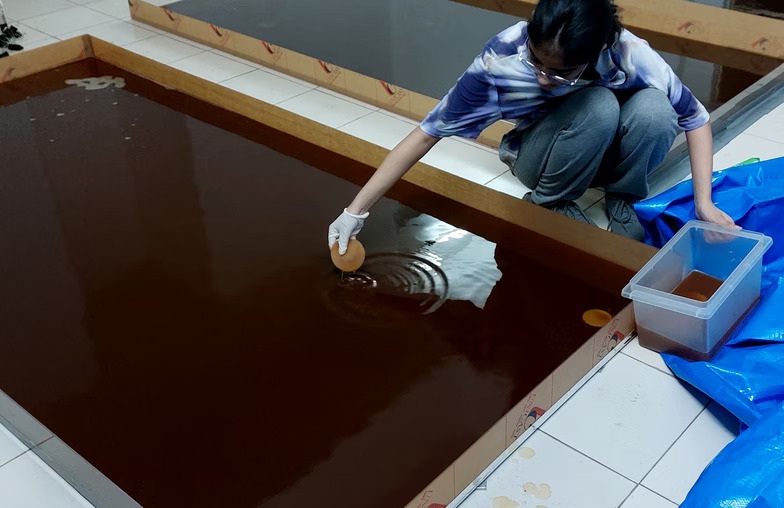
The designers’ exploration started with SCOBY (Symbiotic Culture of Bacteria and Yeast), a by-product of the kombucha industry.
Tradition Meets Innovation
The designers’ exploration started with SCOBY (Symbiotic Culture of Bacteria and Yeast), a by-product of the kombucha industry. While SCOBY is typically used to ferment tea into the popular pro-biotic drink, Luhadia and Shinde repurposed it as a viable design material. By fermenting tea, sugar, water, vinegar and SCOBY, they cultivated bacterial cellulose, which when dried, resulted in a biodegradable, leather-like material, which is commonly referred to as SCOBY leather.
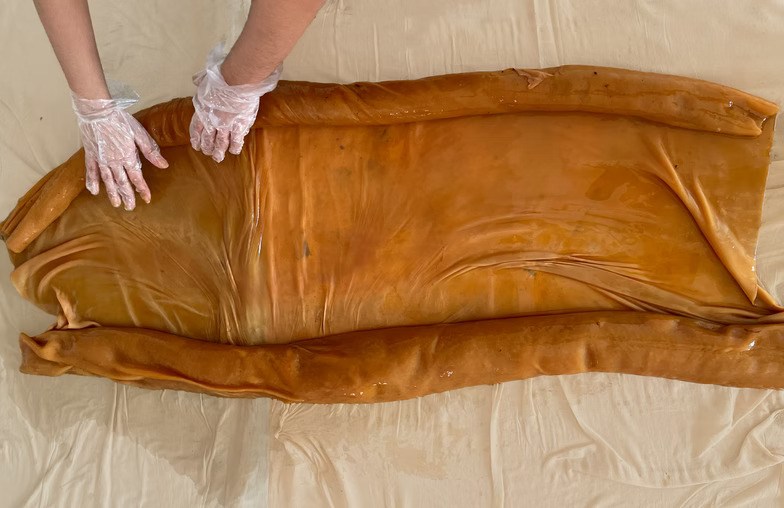
This biomaterial, with its capacity to be grown in varied shapes and sizes using simple ingredients, presented a compelling alternative to traditional leather, aligning seamlessly with principles of conscious design.
This biomaterial, with its capacity to be grown in varied shapes and sizes using simple ingredients, presented a compelling alternative to traditional leather, aligning seamlessly with principles of conscious design. What set this work apart is not only the innovation of the material itself, but also its contextual application within an Indian cultural narrative.
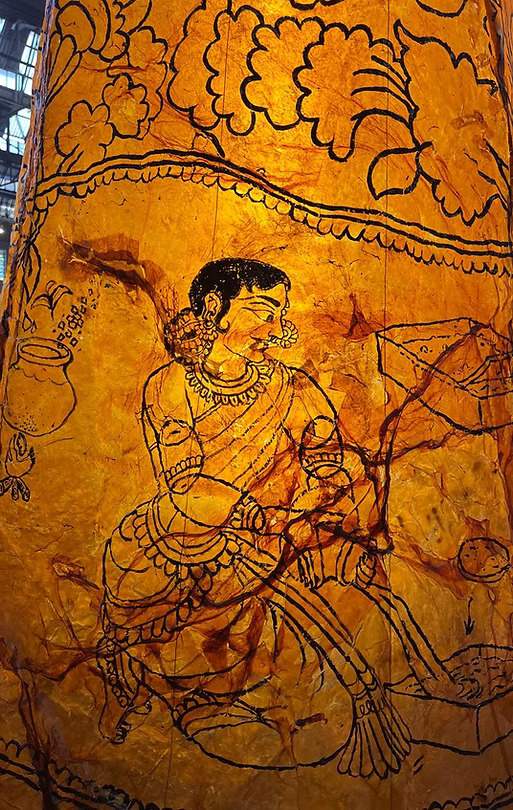
These illustrations then themselves narrate the story of how the biomaterial came into being, turning the lamp into both an object and a storytelling medium.
From Kombucha to Craft
After initial experiments on kitchen countertops, the designers decided to apply this material within an Indian cultural framework. Luminous Lore, thus, drew its inspiration from Tholu Bommalata, the traditional shadow puppetry art of Andhra Pradesh, which has been historically known to use animal hide to create intricate puppets for storytelling. Historically, this craft involved the use of goat, deer or buffalo hide to create intricately cut and painted puppets used for storytelling. However, over time, as the audience for such performances shifted, artisans began creating contemporary decor items including lamps by using the same techniques and materials. While the form evolved, the materials largely remained traditional and animal-derived.
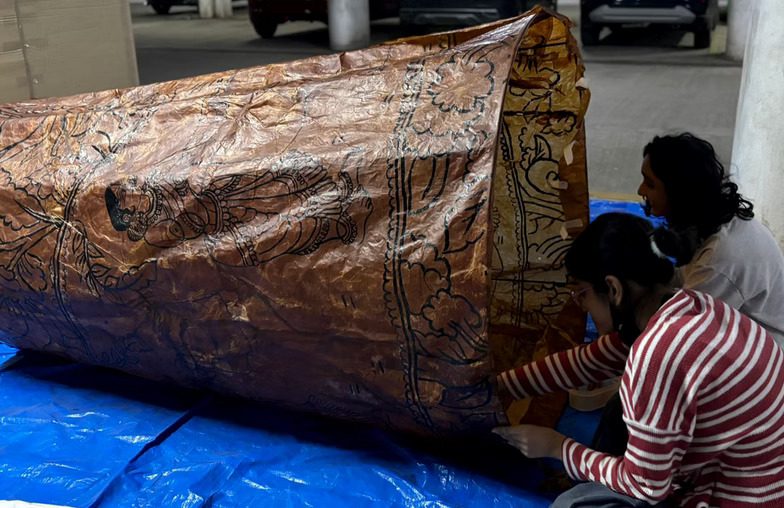
In this installation, the designers replaced animal hide with SCOBY leather to construct a large-scale illuminated lamp echoing the traditional aesthetics of Tholu Bommalata.
Luminous Lore bridges this historical craft with futuristic material innovation. In this installation, the designers replaced animal hide with SCOBY leather to construct a large-scale illuminated lamp echoing the traditional aesthetics of Tholu Bommalata. The lamp’s structure not only honours the visual aesthetic of traditional shadow puppetry but also highlights the interaction of light with this translucent, organic material. As light passes through the SCOBY surface, it casts a warm glow and brings life to intricate hand-painted illustrations on its surface. These illustrations then themselves narrate the story of how the biomaterial came into being, turning the lamp into both an object and a storytelling medium.
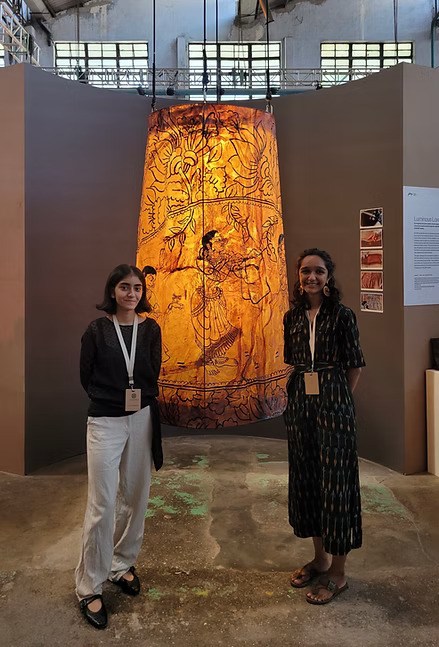
Luminous Lore, thus, drew its inspiration from Tholu Bommalata, the traditional shadow puppetry art of Andhra Pradesh, which has been historically known to use animal hide to create intricate puppets for storytelling.
Luminous Lore invites multi-sensory engagement. It encourages visitors to touch and explore the material, allowing for a tangible understanding of its texture, pliability and strength. Luhadia and Shinde have now opened new avenues for environmentally responsible design, suggesting that the future of materials could lie not just in laboratories, but in culturally grounded, artisan-led experimentation.
Photograph Courtesy: Nishtha Luhadia